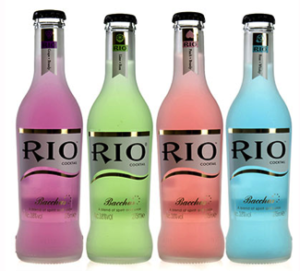
China’s 1.4 billion population has been building up an appetite for imported food products, driven by a growing middle class and food safety scandals. In 2017 alone, China’s total food imports amounted to US$58.28 billion, up 25% year-on-year.
As foreign brands are gaining popularity, they have also caught the attention of Chinese copycats. For infringers, the expedient way to steal market share is simply to imitate the packaging designs, or the general ‘look-and-feel’ of popular foreign products.
Dealing with look-alike products can be challenging and requires more than just protecting a brand through traditional trademark registration. Foreign food manufacturers and exporters should consider other forms of protection. This article sets out the various forms of intellectual property rights protection for product packaging.
3D trademarks for distinctive product shapes
Any sign capable of distinguishing the goods of a person or organisation from those of another, may qualify for registration as a trademark. The sign may take the form of words, figures, letters, numbers, three-dimensional (3D) signs, colour combinations, sounds or a combination of any of these elements. Words, figures, letters and numbers are categorised as traditional marks whereas 3D signs, colour combinations, smell and taste marks are considered non-traditional trademarks. Single-colour marks, smell and taste marks are still not available for registration in China.
Product shapes, if registered as 3D trademarks, will be afforded protection which can be renewed every 10 years. However, Nestle’s recent defeat in claiming exclusivity over its KitKat four-fingered shape raises again the issue of when a shape becomes distinctive to deserve trademark protection.
Online records show that KitKat has not applied to register the four-finger shape in China. But it would have been a long shot in any case because Chinese trademark authorities tend to restrict 3D trademark registrations to unusual shapes and designs.
For instance, the chocolate shape on the left in the diagram below, which is comparable to the four-finger shape, is an example used in the Chinese Trademark Examination Guidelines to illustrate a shape lacking in distinctiveness. The Guidelines have not made it clear as to the level of distinctiveness required for a 3D trademark registration.
However, based on current examination practice, probably shapes such as Ferrero Rocher’s chocolate packaging (on the right) are likely to be considered sufficiently distinctive for a 3D trademark registration (Reg. No. G783985 and Reg. No. 11839757).
If a 3D mark application is rejected for lacking in distinctiveness, the brand owner is entitled to file an appeal to prove that the mark has acquired distinctiveness through use. Normally, the appeal board would require the shape to meet two conditions:
- The shape itself possesses a certain degree of inherent distinctiveness; and
- Consumers are familiar enough wth the shape to rely on it to distinguish the product source.
This standard has been adopted in an appeal case involving the registration of a shampoo bottle design as a 3D mark. The case was selected as one of the 20 representative cases for 2017 by the Trademark Review and Adjudication Board for the, indicating that successful registrations of product packaging designs as 3D marks are still scarce in China.
Design patent an alternative to 3D mark
Since it takes time to accumulate sufficient evidence to secure a 3D trademark registration, a brand owner may first attempt to protect its interests by registering a design patent. The application must be filed before the design becomes public anywhere in the world to comply with the novelty requirement of a patent registration.
In addition, a design patent needs to contain sufficient decorative elements in respect of its words, colour or patterns. If its design only serves to identify the product source, such as the red can of Jiaduobao herbal tea below, it will probably be rejected for lacking aesthetic value.
 Once registration has been obtained, the brand owner can take action against an infringer for patent infringement if the infringer sells or imports the product incorporating the patented design for production or business purposes. The protection of design patents is limited to identical and similar products. Furthermore, the protection only lasts for 10 years and it cannot be extended by renewal.
Once registration has been obtained, the brand owner can take action against an infringer for patent infringement if the infringer sells or imports the product incorporating the patented design for production or business purposes. The protection of design patents is limited to identical and similar products. Furthermore, the protection only lasts for 10 years and it cannot be extended by renewal.
Copyright another alternative to 3D mark
If the product designs possess sufficient aesthetic value, they should be subject to protection as works of applied art under the Berne Convention, of which China is a member.
However, the level of creativity and aesthetic value required by the Chinese courts for copyright protection is usually high. Unless brand owners can be sure that their designs are eligible for copyright protection, they are recommended to secure a design patent registration which requires a lower level of creativity and aesthetic value. Copyright protection and design patent protection are not mutually exclusive in China.
Unfair competition claims for blatant imitations
China’s Anti-Unfair Competition Law forbids business entities from using other parties’ famous business identifiers (including trade dresses) to mislead consumers.
In May 2017, the Beijing Intellectual Property (IP) Court concluded a case involving the famous alcopop brand ‘RIO’ and the copycat ‘BIO’. On the left are the infringing products, which are blatant imitations of the genuine products on the right.

The brand owner sued the infringer for unfair competition and was awarded the maximum statutory damage of RMB 3,000,000 plus reasonable costs. The case was selected as one of the 10 representative IP protection cases in 2017 by the Beijing IP Court, showing the courts’ willingness to take stricter measures against bad faith imitations in the market.
What food manufacturers can do
Currently, Chinese courts and law enforcement bodies are still not in a position to effectively tackle look-alike products in the market. However, they are at least showing a willingness to make improvements and increase their focus on these types of infringements. To ensure effective protection of their packaging designs, food manufacturers should consider alternative IP protection in addition to traditional trademark registration.
For food manufacturers contemplating heavy investment on product packaging to promote sales, brand presence or gain market entry, conducting a trademark clearance search or a pre-launch advice for the packaging design would be a good starting point to avoid or minimise unnecessary delays in product launch, market entry and infringement risks.
Andrew Sim, Shirley Zhao
About the authors:
Andrew Sim is a partner of the IP Group in the Beijing office of Baker McKenzie. His practice focuses primarily on intellectual property law in mainland China, assisting clients with strategic planning of their intellectual property rights and directing anti-counterfeiting operations relating to trademarks, copyright, domain names, trade names, passing-off, unfair competition, designs, product labeling as well as advising on consumer, media and advertising laws. Andrew has successfully assisted clients in the food and beverage industry in a number of significant trend setting cases in China.
Shirley Zhao is an associate for Baker McKenzie. Her practice covers China related IP matters, including trademarks, anti-counterfeiting, copyright, IP litigation and advertising. She has extensive experience assisting clients in the consumer goods and retail sector on trade mark prosecution and enforcement matters.
Sources:
Jia Duo Bao e-commerce store: https://item.jd.com/7876317.html
Source: http://www.sohu.com/a/126911542_48254p






